Back to top: Figurines from Unit A16
Overview
121 figurines were found in A16, most of them are just fragments and they are not well recognizable. Only the body is preserved, legs and head and necks are usually missing. Here we will try to give a general overview of the several typologies found.
Back to top: Figurines from Unit A16
Human Figurines
Only 6 fragments of human figurines are identified. i7 and i12 are uncertain, the shape of the objects resemble humanoid torso and two legs. Another uncertain figurine is i129, showing anthropomorphic shape with a round torso and nubs for the arms, but no head. In this case the human silhouette is very stylized.
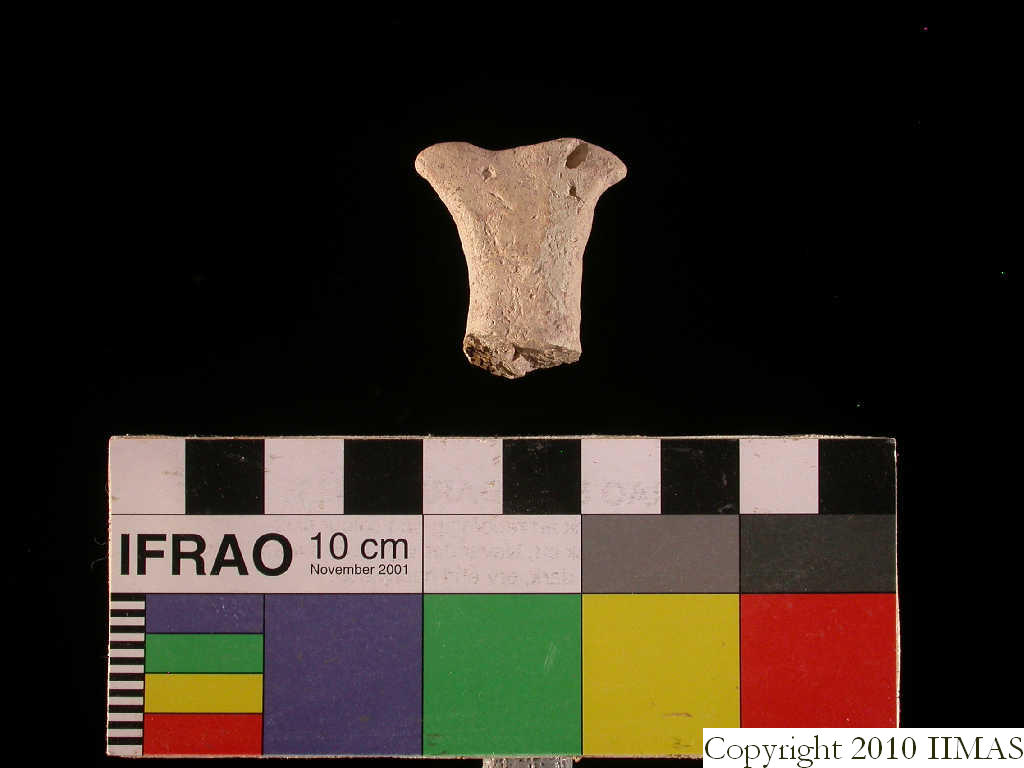 i129 |
Back to top: Figurines from Unit A16
Female figurines
More easily recognizable the female figurines i27 shows a breast intact and hands that are supporting them. i116 with two breasts, a small portion of right arm preserved, and maybe her right hand supporting the right breast. Also a portion of a necklace made of large beads applied as small balls of clay is preserved, draped over her shoulders.
A different example is constituted by q638.3. There is a portion of a female body and it belongs to a clay plaque. Unfortunately the plaque is broken and only from the waist to the feet preserved. The feet are flat and pointing out, the legs have a vertical and marked space in between. A orange/red painted decoration highlight some elements, a dot for the belly button, a painted belt with tassels, the pubis and the feet (possibly suggesting shoes?).
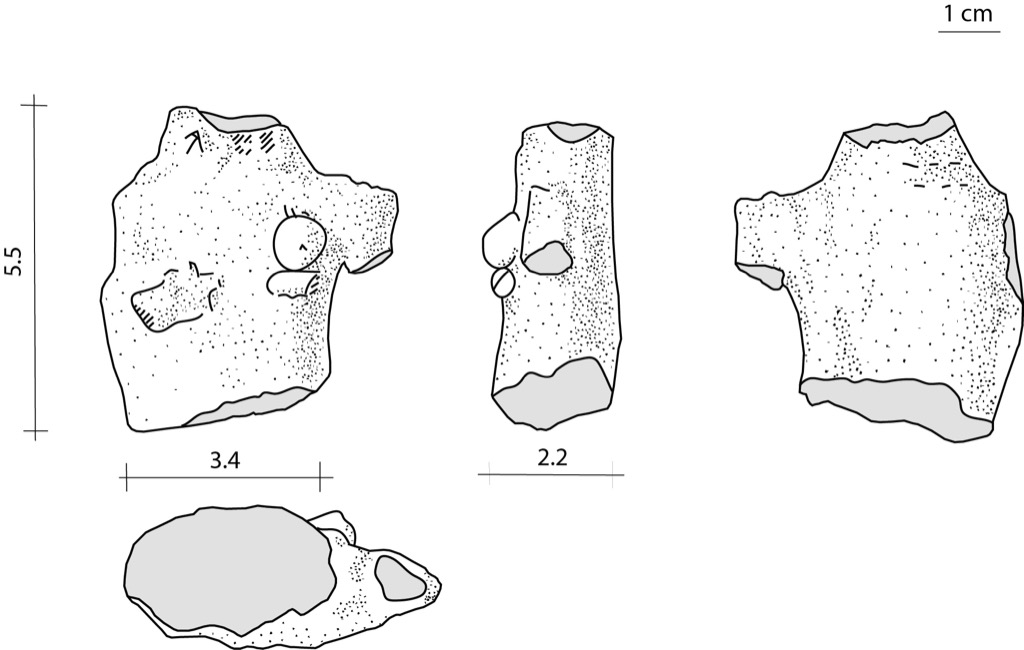 i27 |
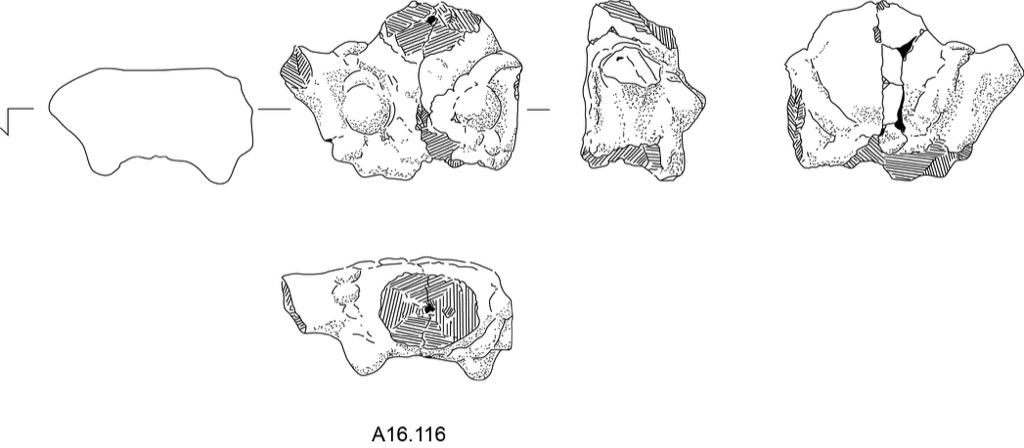 i116 |
A similar figurine fragment belonging to a clay plaque is q625.3. It shows two legs broken at the knee. The legs are together and forms a nice groove in the center which turns into a “V”. The pubis area is triangular.
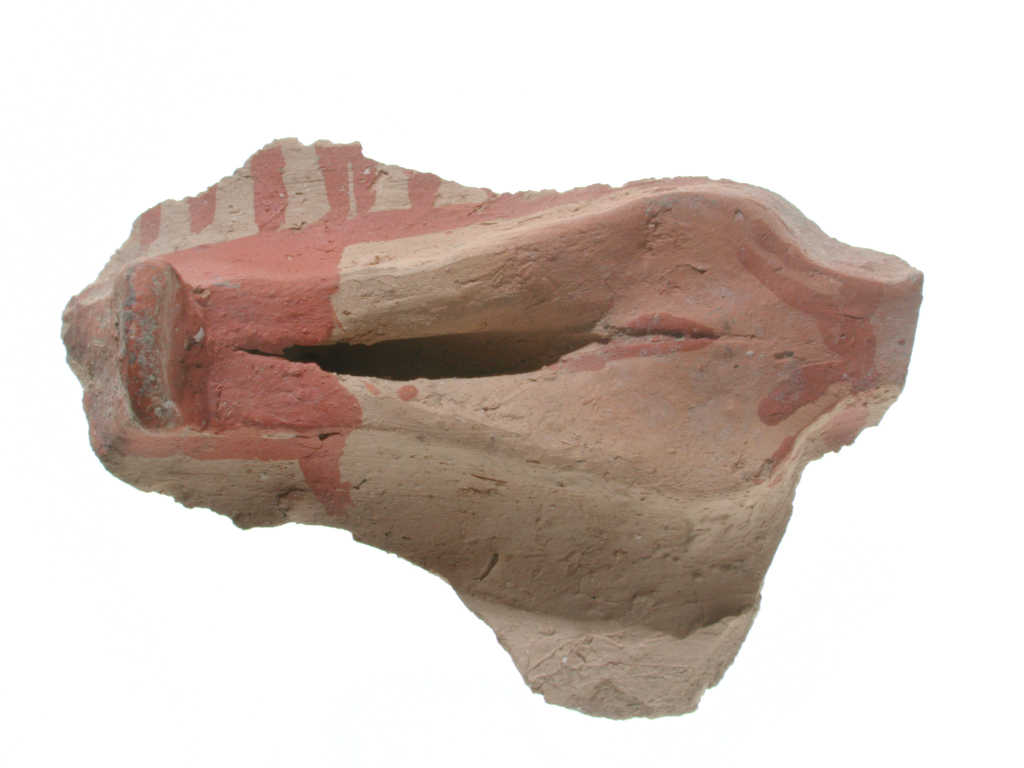 q638.3 |
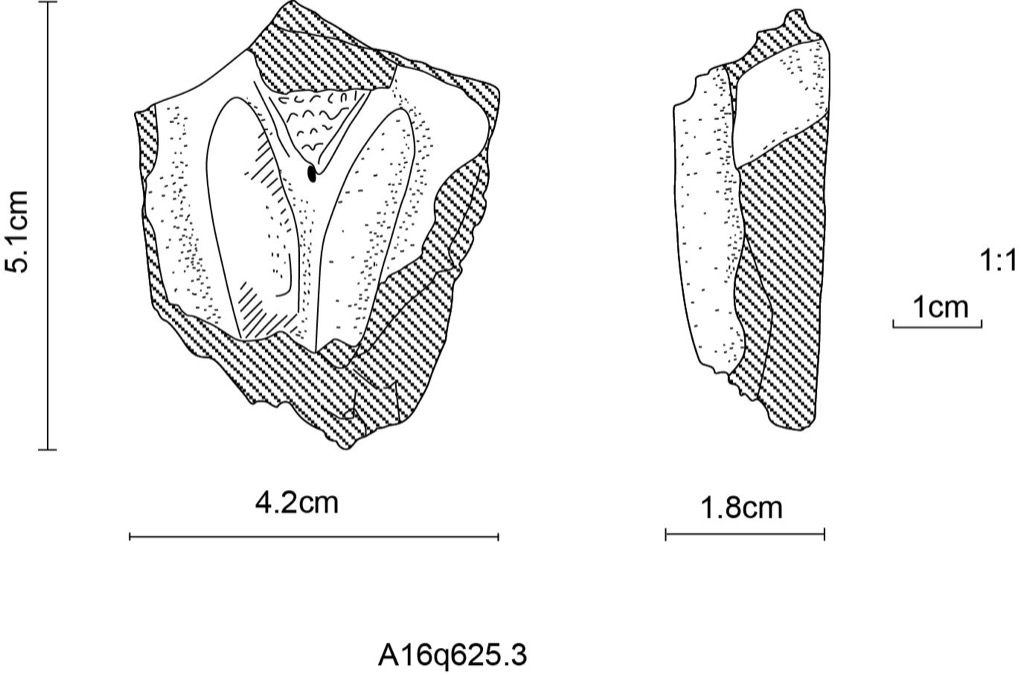 q625.3 |
Back to top: Figurines from Unit A16
Animal Figurines
The animal figurines form almost the totality of the figurines. On the bases of distinctive elements we tried to divide them in various species.
Back to top: Figurines from Unit A16
Ram/Sheep/Goats
Rams and goats interpretation are related to the fragments of head, easily recognizable for the horns that curve down for the rams (i1) and go straight for the goats (q13.1, q169.1, q531.2). The torso is more difficultly indicative but it is usually specific in the hindquarters and forequarters (q29.2, q559.1). So in general this category is identified by the head.
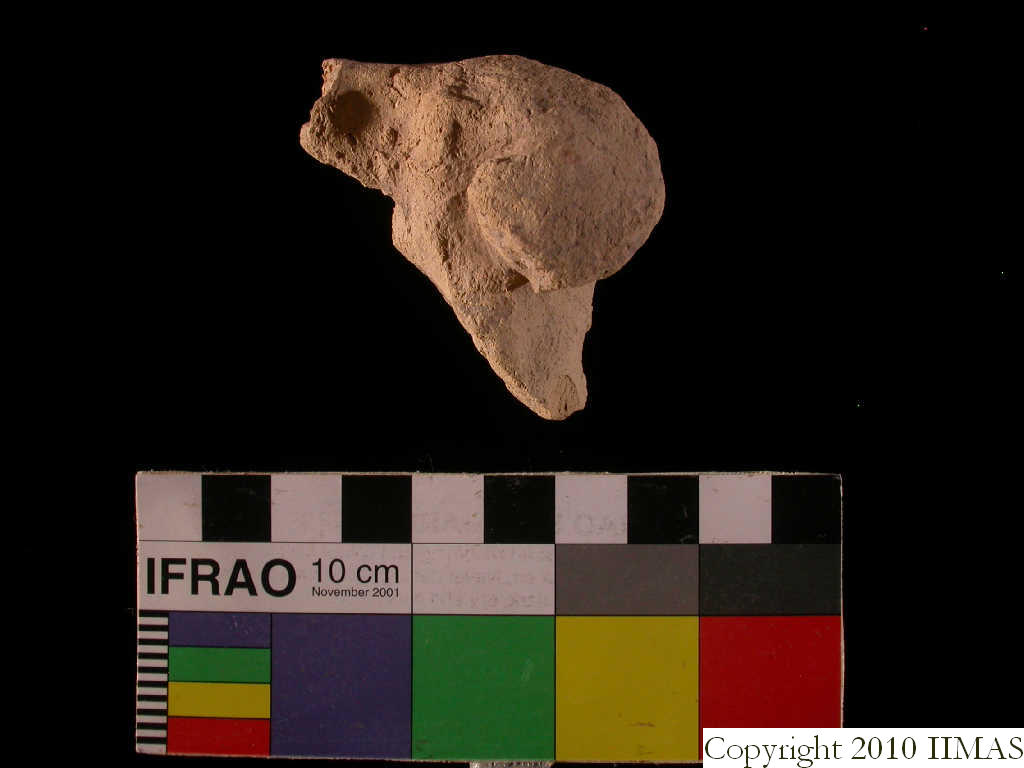 i1 |
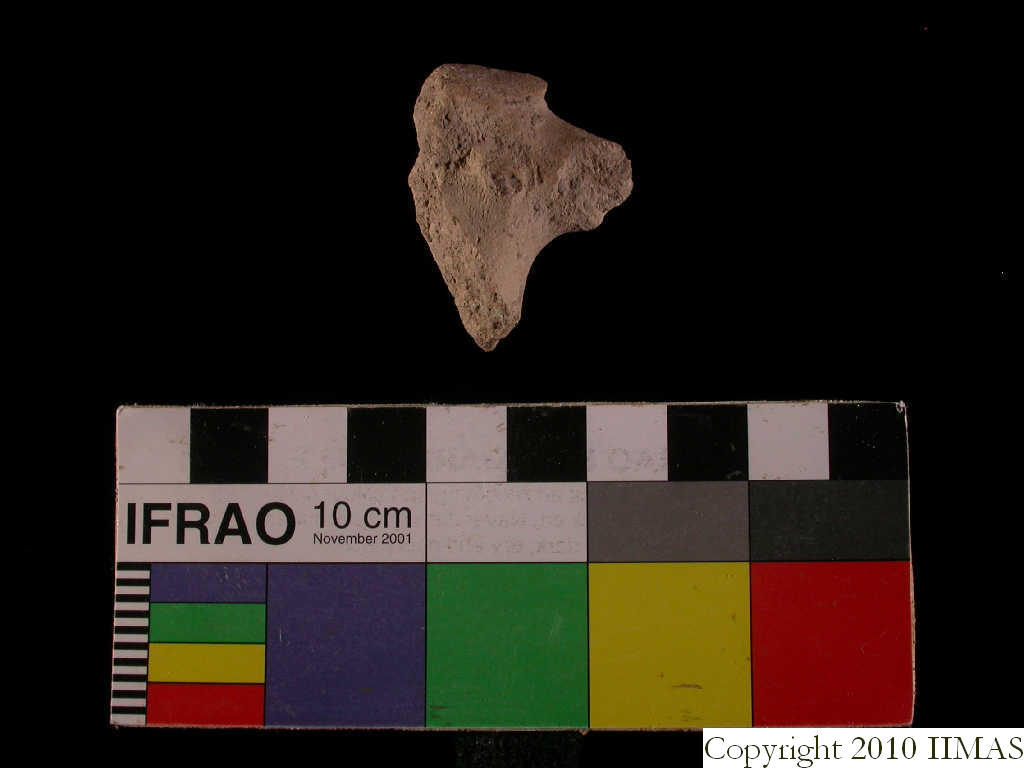 q13.1 |
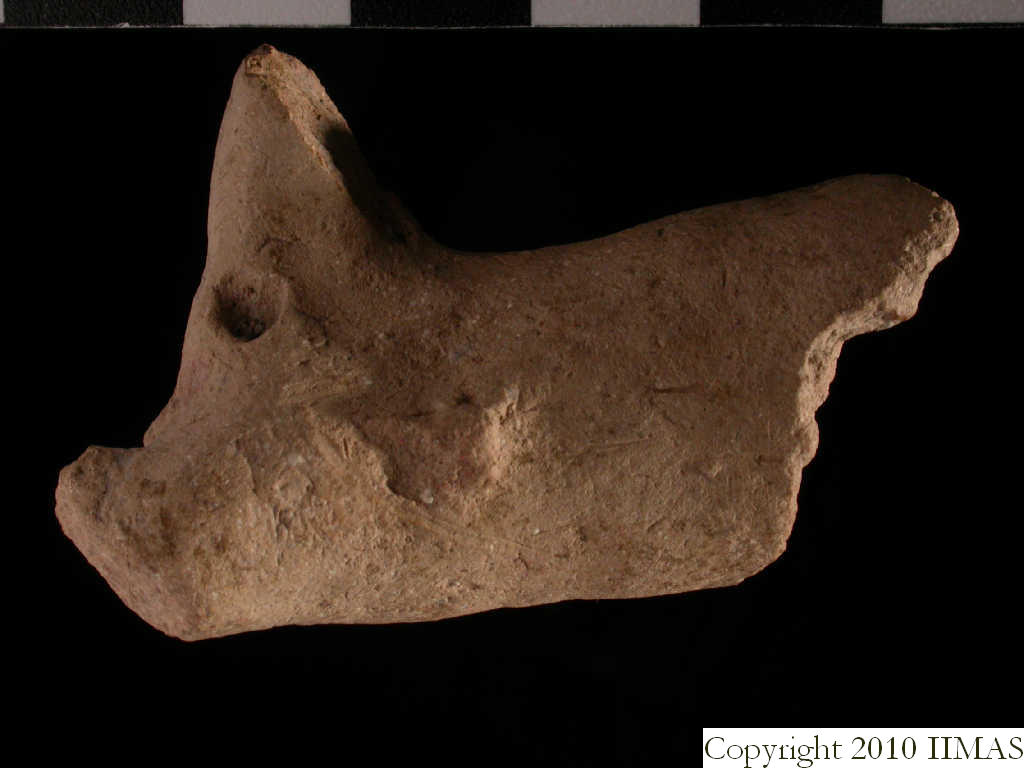 q531.2 |
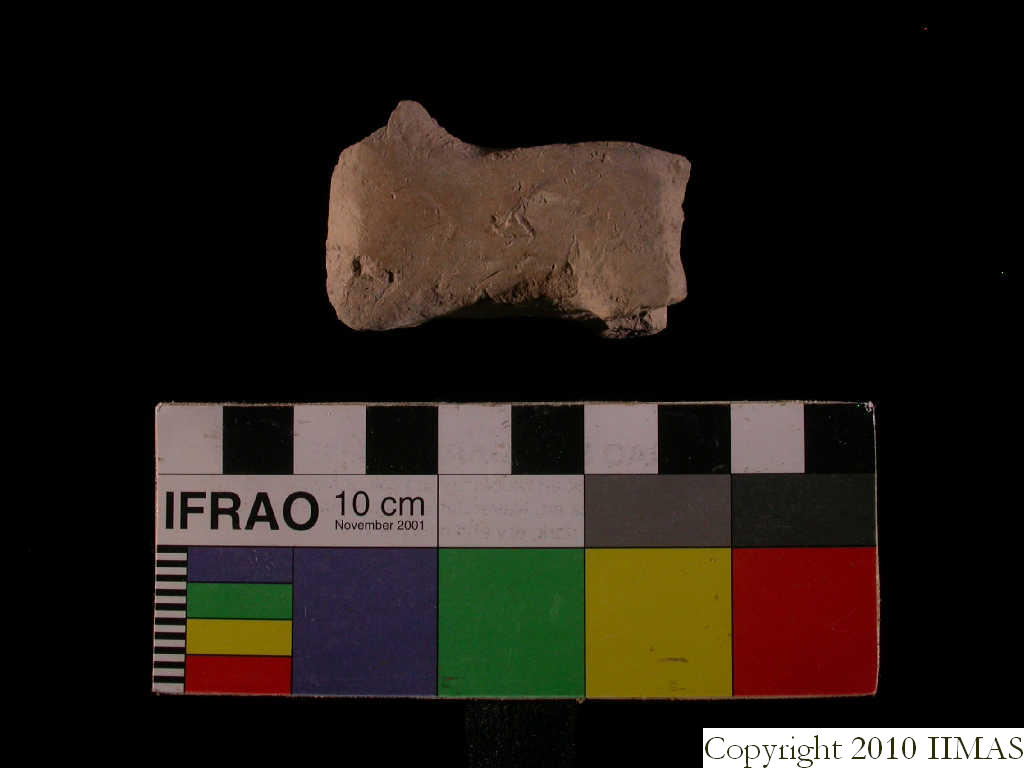 q29.2 |
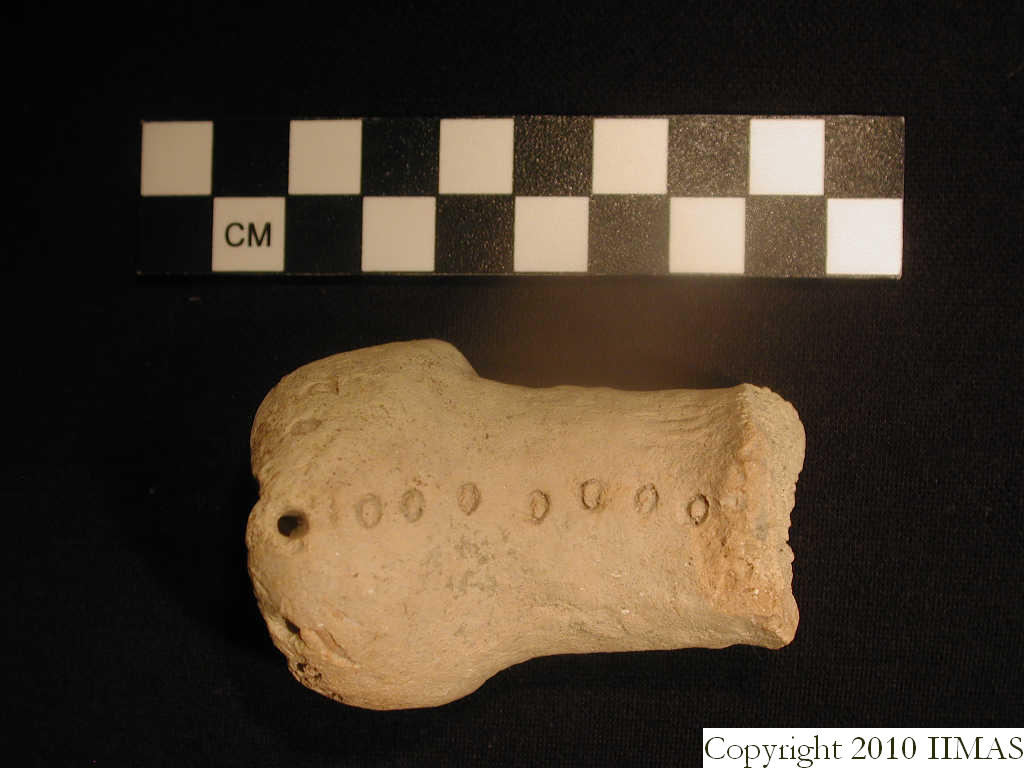 q559.1 |
Back to top: Figurines from Unit A16
Birds
Bird figurines are less common, but attested. q809.1 is made of a very dark clay, it looks just two-dimensional and it has a very stylized shape resembling perhaps a dove or a duck.
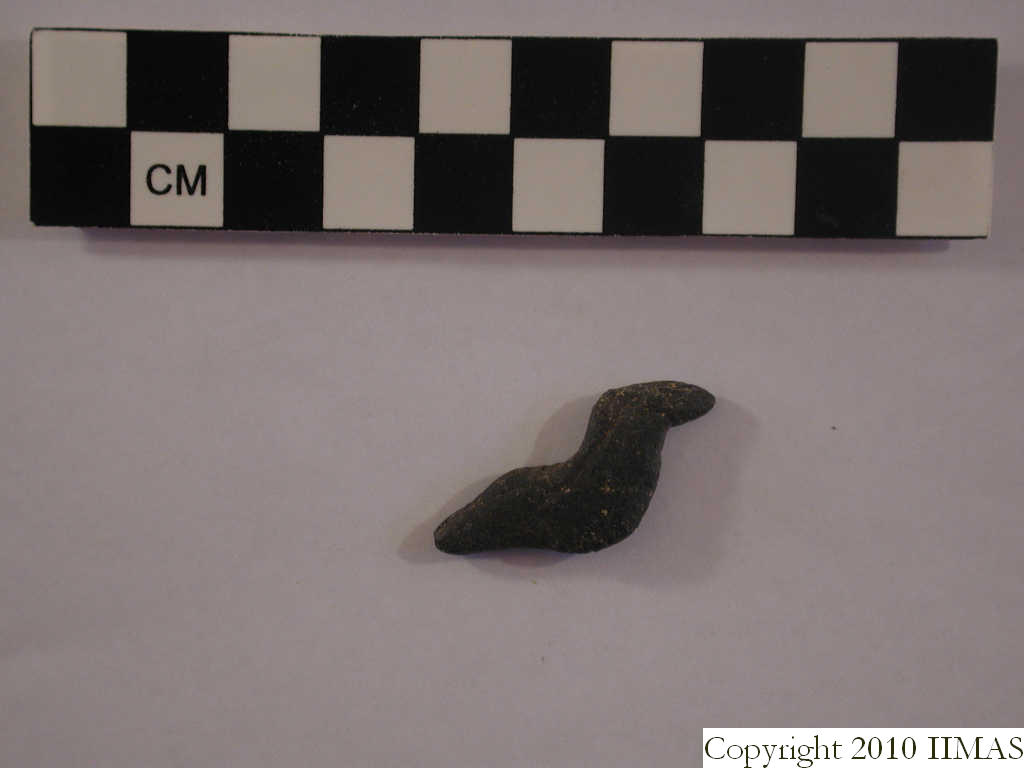 q809.1 |
Back to top: Figurines from Unit A16
Horses
The identification of horse figurines is based on the presence of a long neck,the mane, the tail (i6, q449.1, q816.1). Sometimes the heads show the bridles, and rarely blinkers (i23).
 i6 |
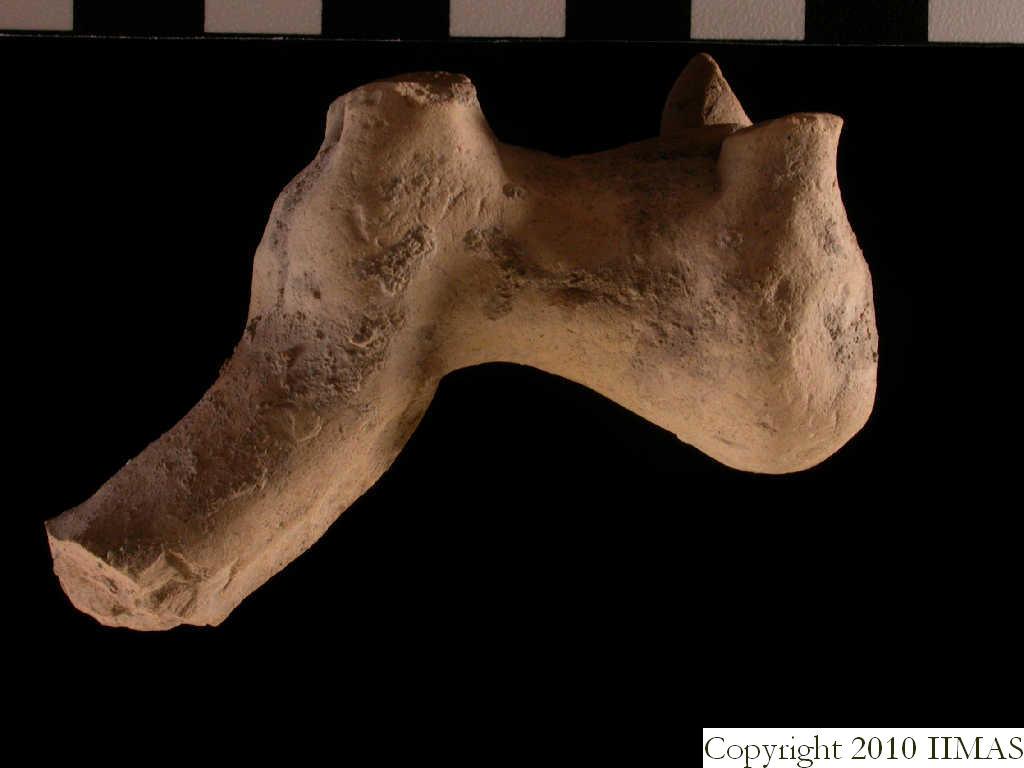 q449.1 |
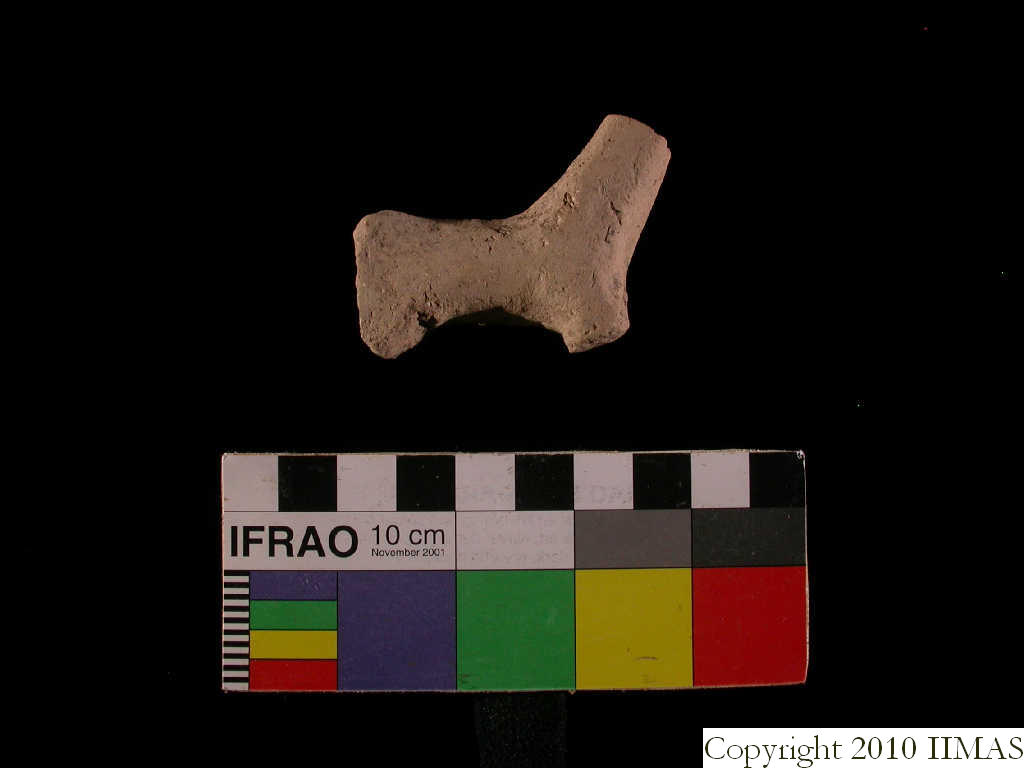 q816.1 |
Back to top: Figurines from Unit A16
Bears
The identification of bear figurines is purely tentative, but two figurines show distinctive traits. i18 is a miniaturistic figurine and the cranial details and the general shape of the hindquarters and forequarters bring back to the idea of bear. q795.1 is an animal head with incision indicating hairs in the neck and in the back of the head. The use of incisions to reproduce the animal hairs is also found in other typologies (sheep).
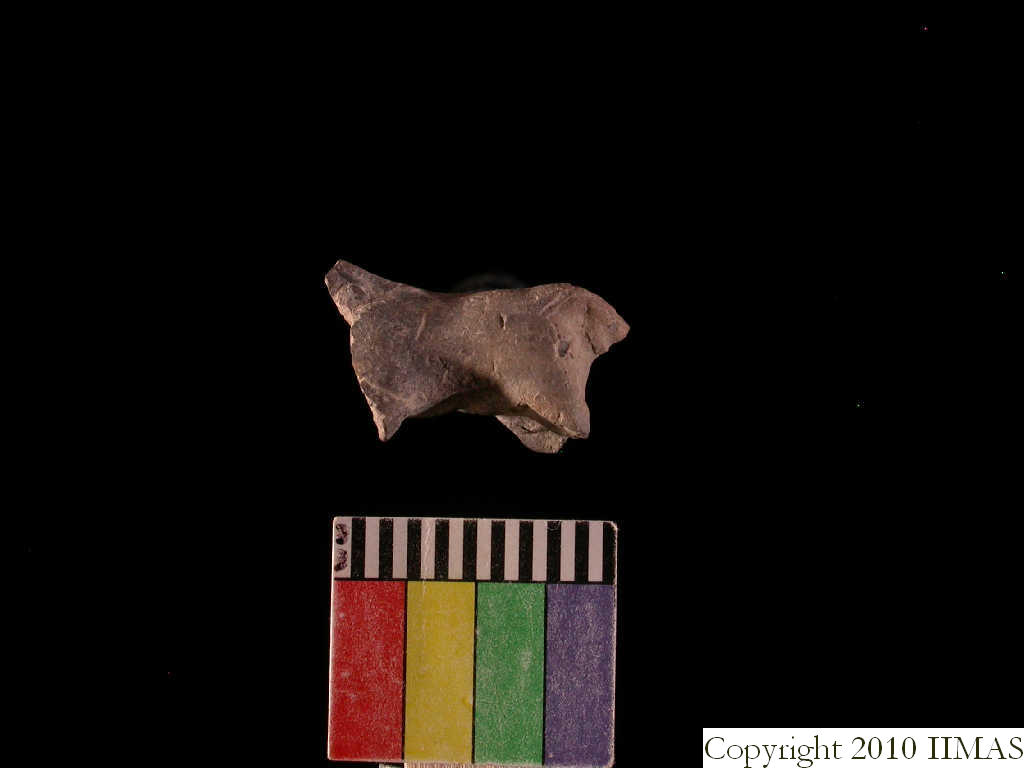 i18 |
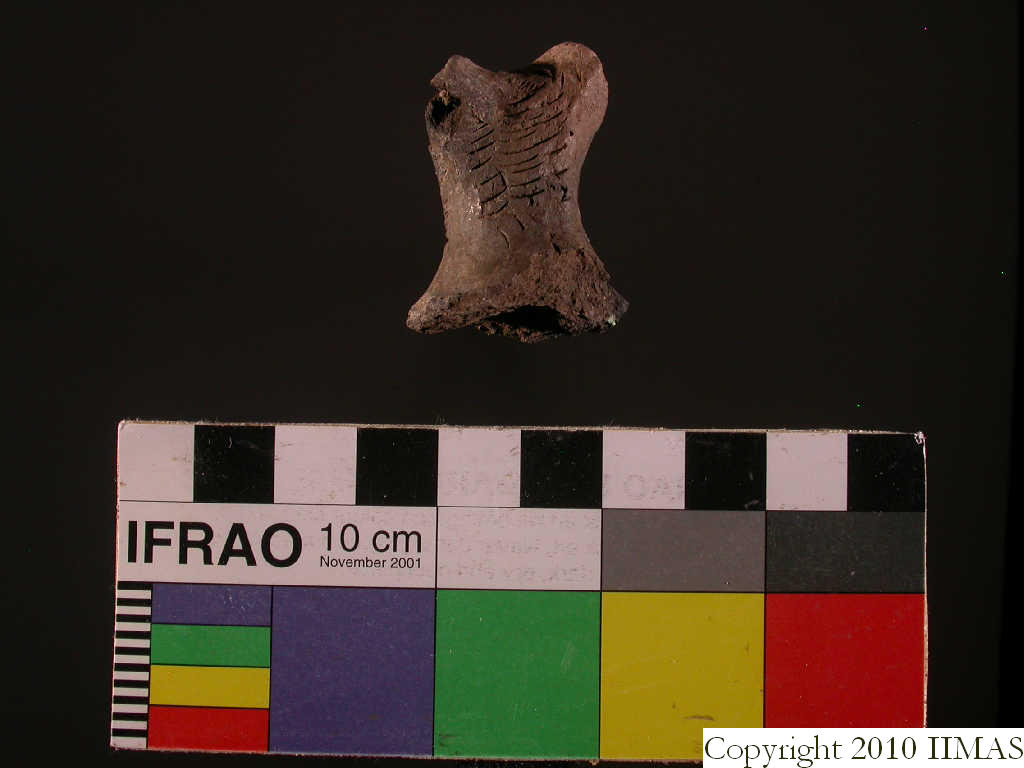 q795.1 |
Back to top: Figurines from Unit A16
Canis
Three figurines (q147.2, q512.1, q520.1) are identified tentatively with canis species. No specific traits visible.
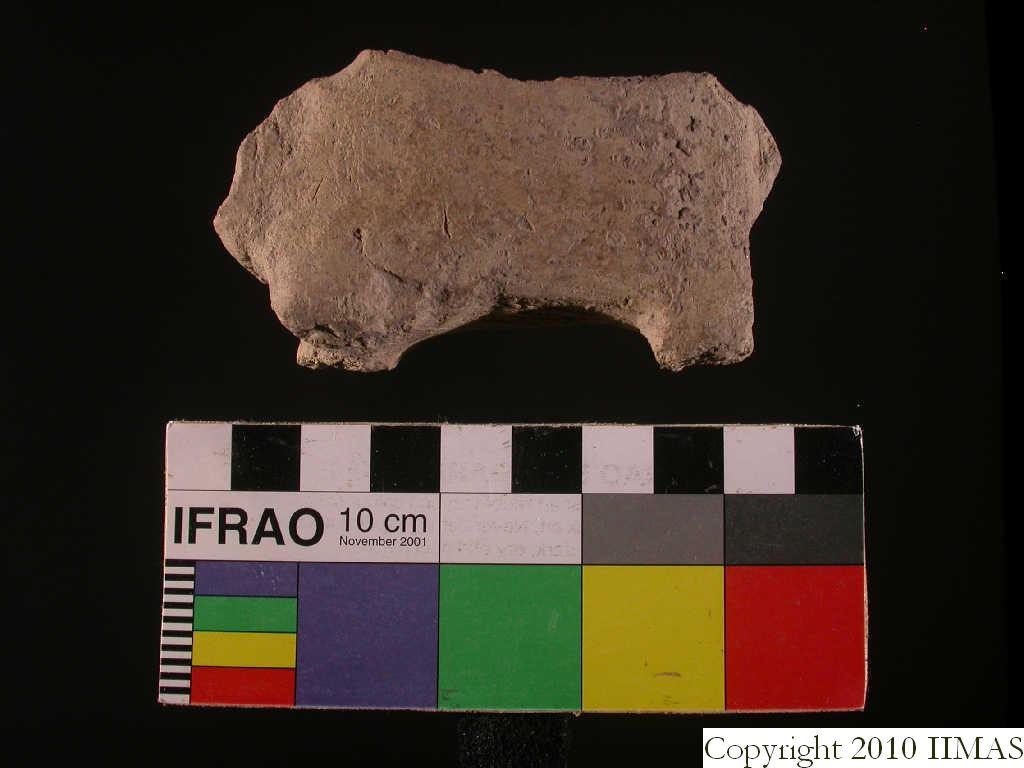 q147.2 |
Back to top: Figurines from Unit A16
Other animals
Two figurines seem resembling bos species. q125.1 preserves just the hindquarters with a thick tail, q530.1 both the hindquarters and forequarters but without specific traits. Another small fragment (q796.99) looks like the end of a pig muzzle with three holes, but since it is just a small fragment it is difficult to assume the original whole shape. Tentative attributions.
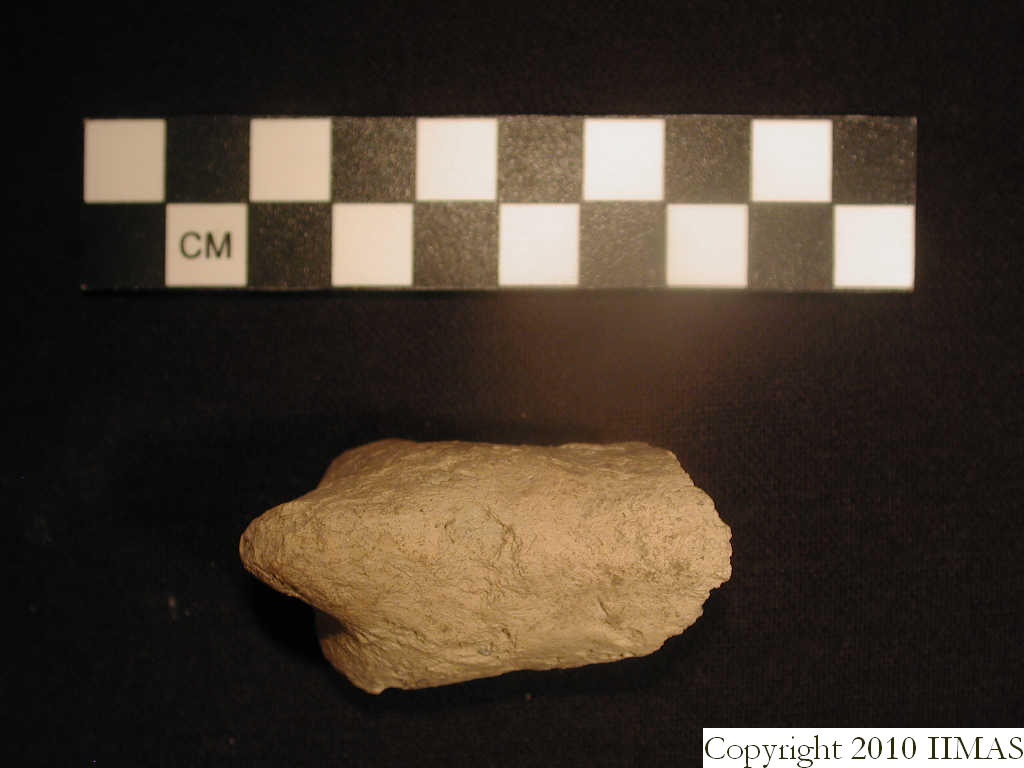 q125.1 |
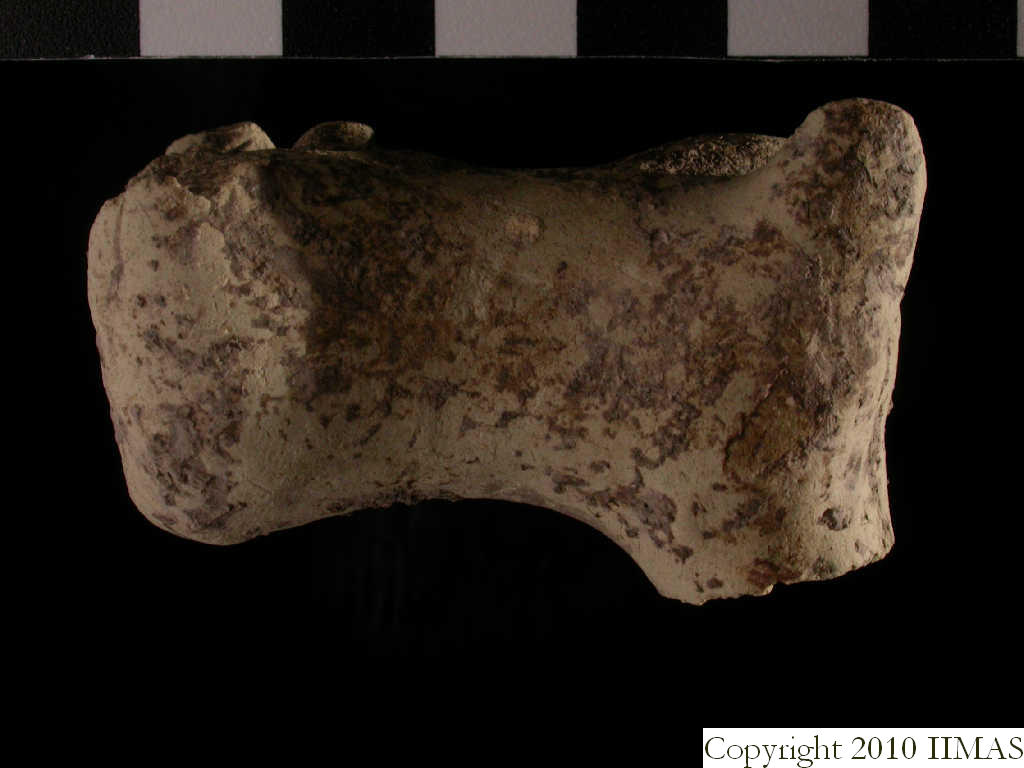 q530.1 |
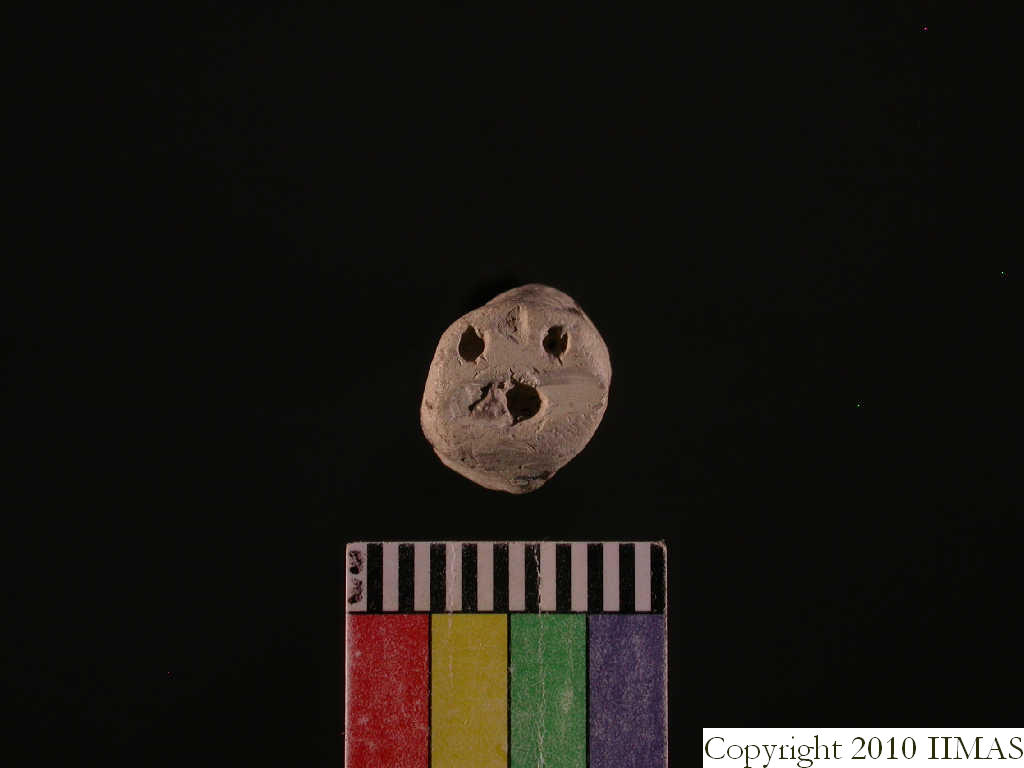 q796.99 |
Back to top: Figurines from Unit A16
Decorations
Only few figurines are decorated. Painted decoration is not attested, while incised and impressed only seldom. Incisions are used to render the hairiness of the animals, usually in the forequarters, on the chest (q618.1 and q643.3), on the neck (q795.1) and on legs and body (q618.3). Another kind of decoration is the impression, attested only in one example (q559.1) from our corpus, with a decoration of small impressed circles forming a line on the back and on the legs of the animal figurine.
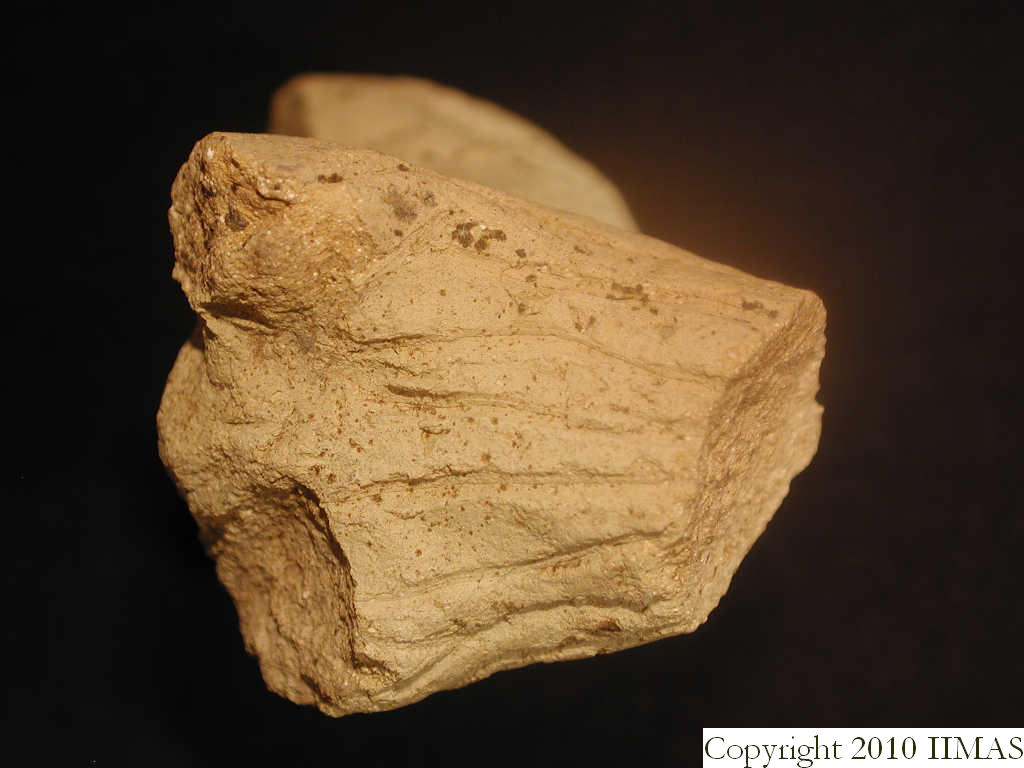 q618.1 |
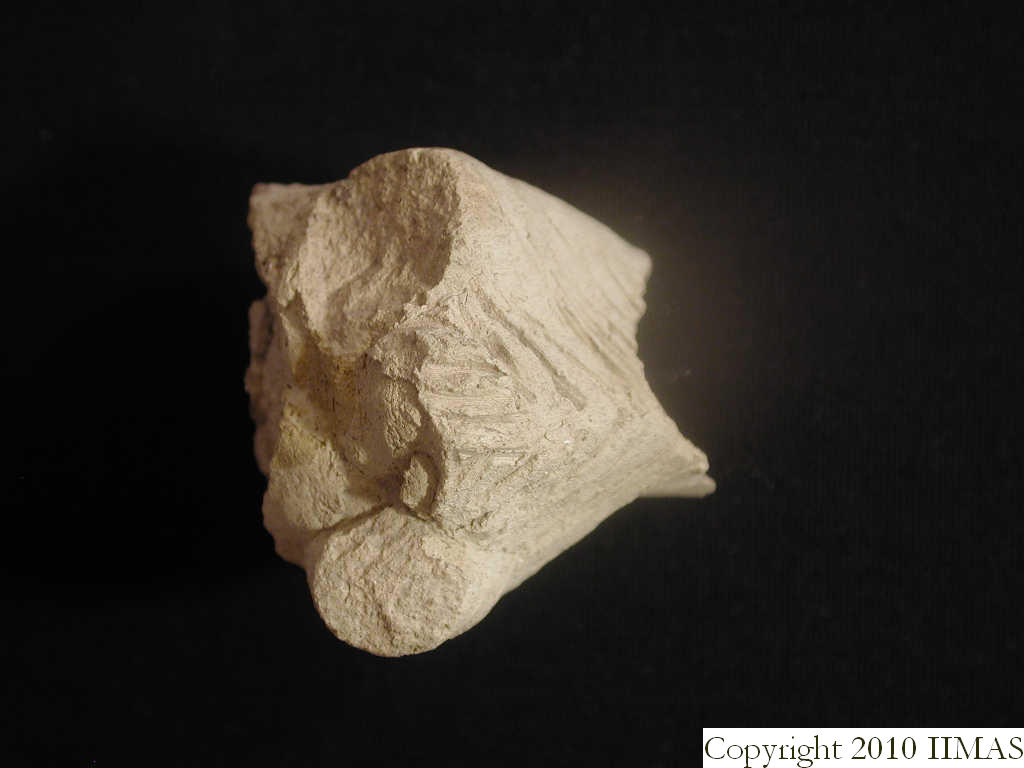 q643.3 |
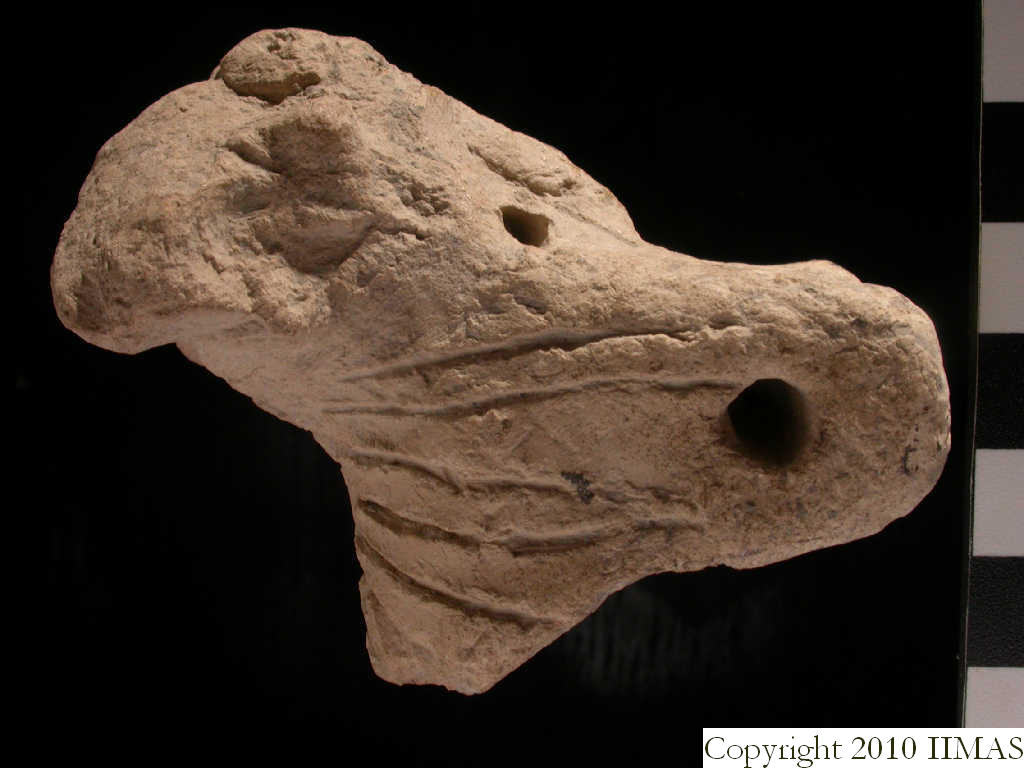 q618.3 |
 q559.1 |
Back to top: Figurines from Unit A16
General Animal body
Some of the identifications are purely tentative because of the bad preservation conditions of the figurines. Here it follows a list of uncertain or impossible to identified figurines. They are body (torsos) often with just legs and neck junctions. Specific traits (tail, genitals, mane) not always occur.
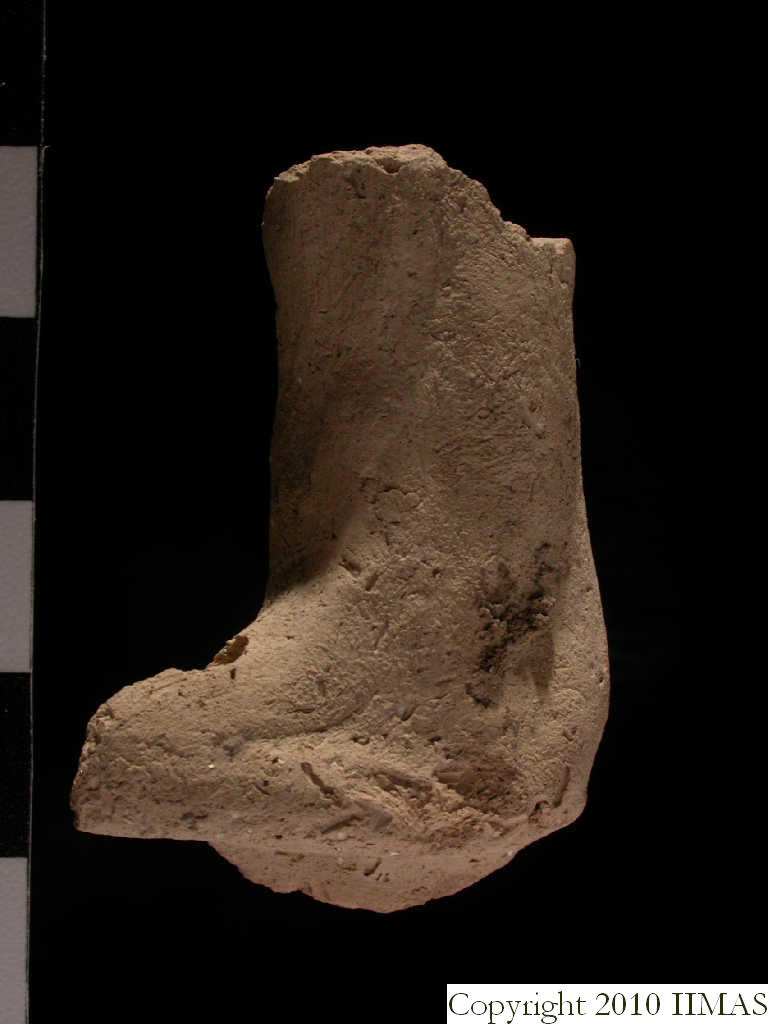 q524.1 |
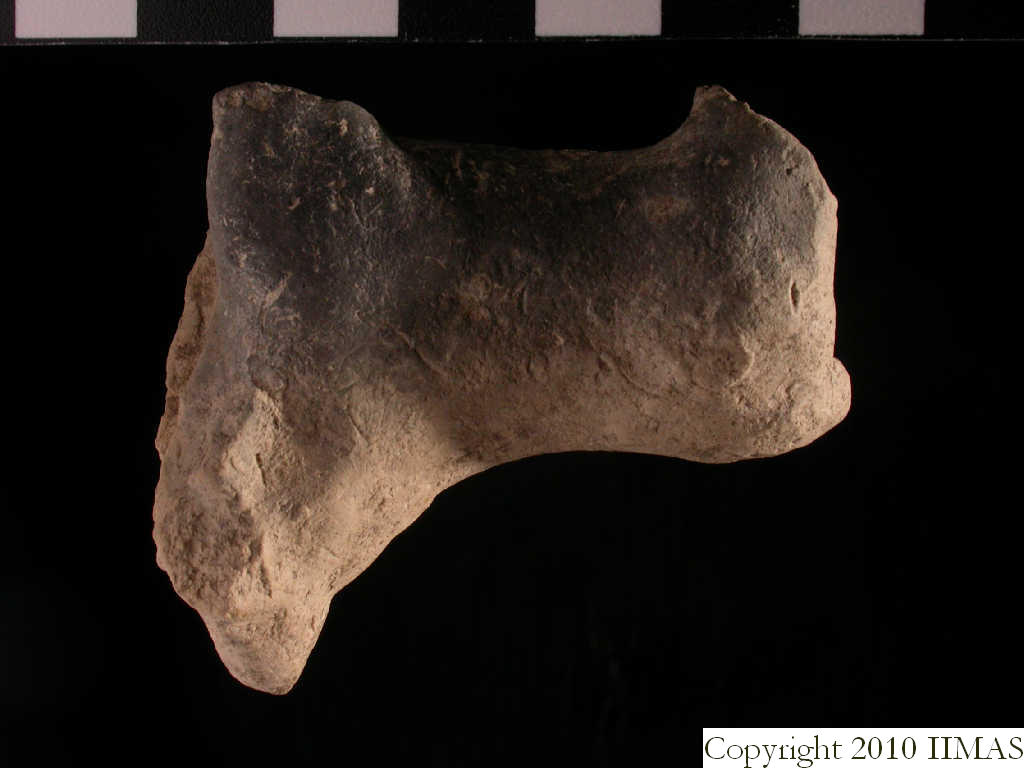 q607.1 |
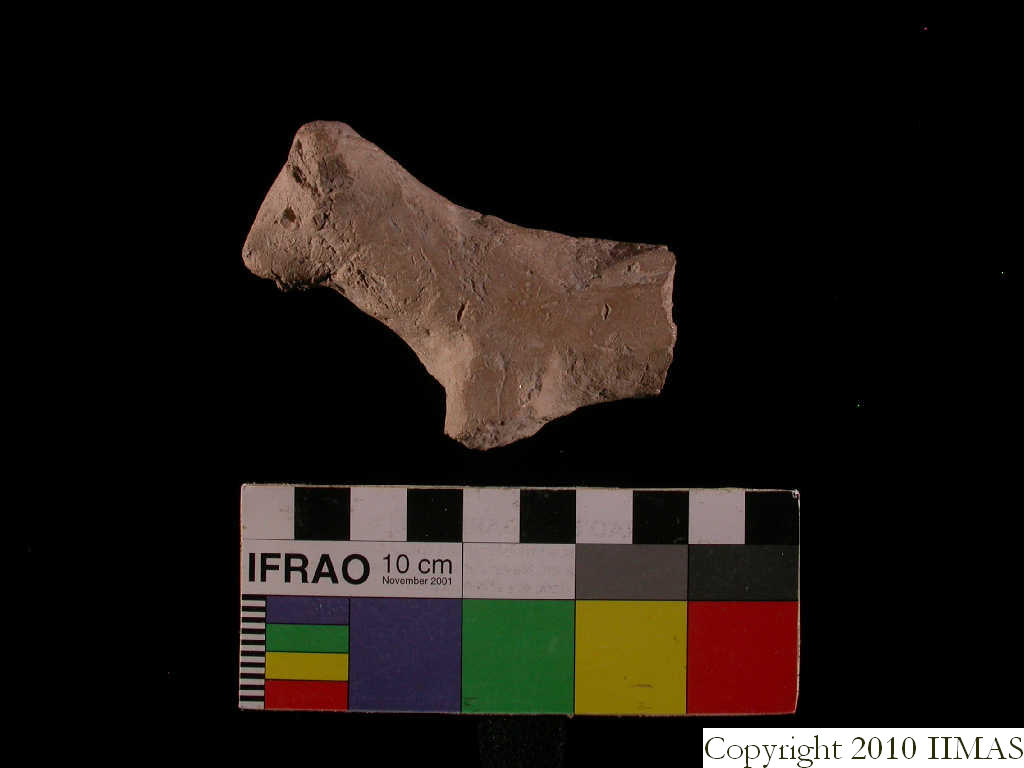 q641.1 |
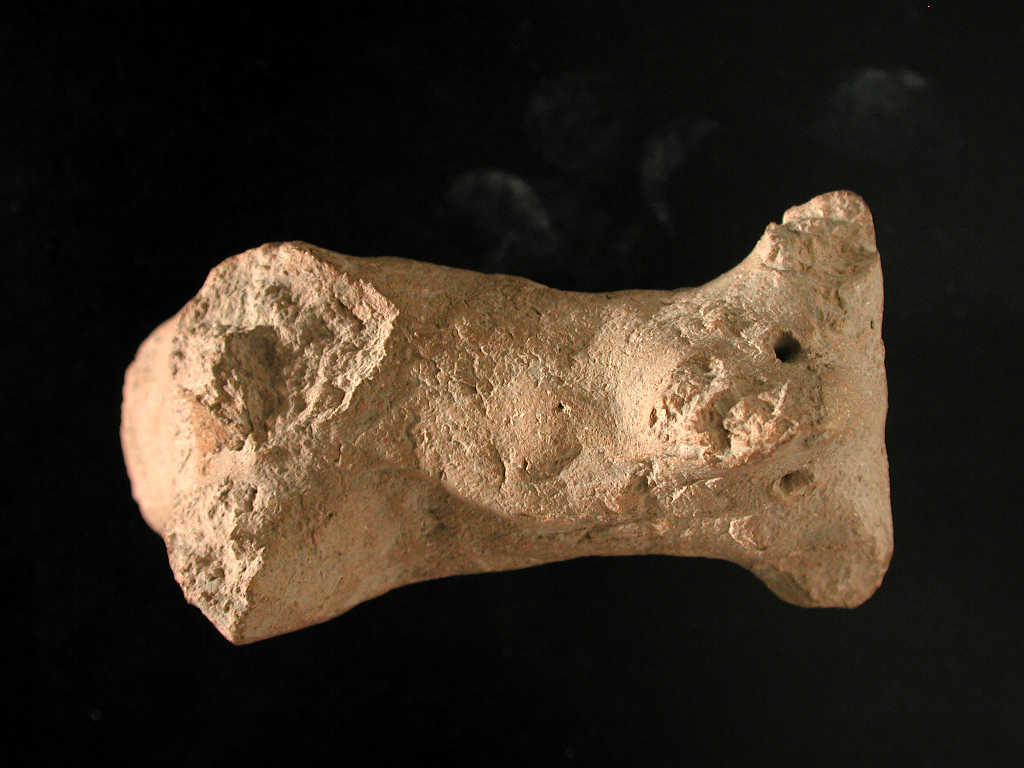 q691.1 |
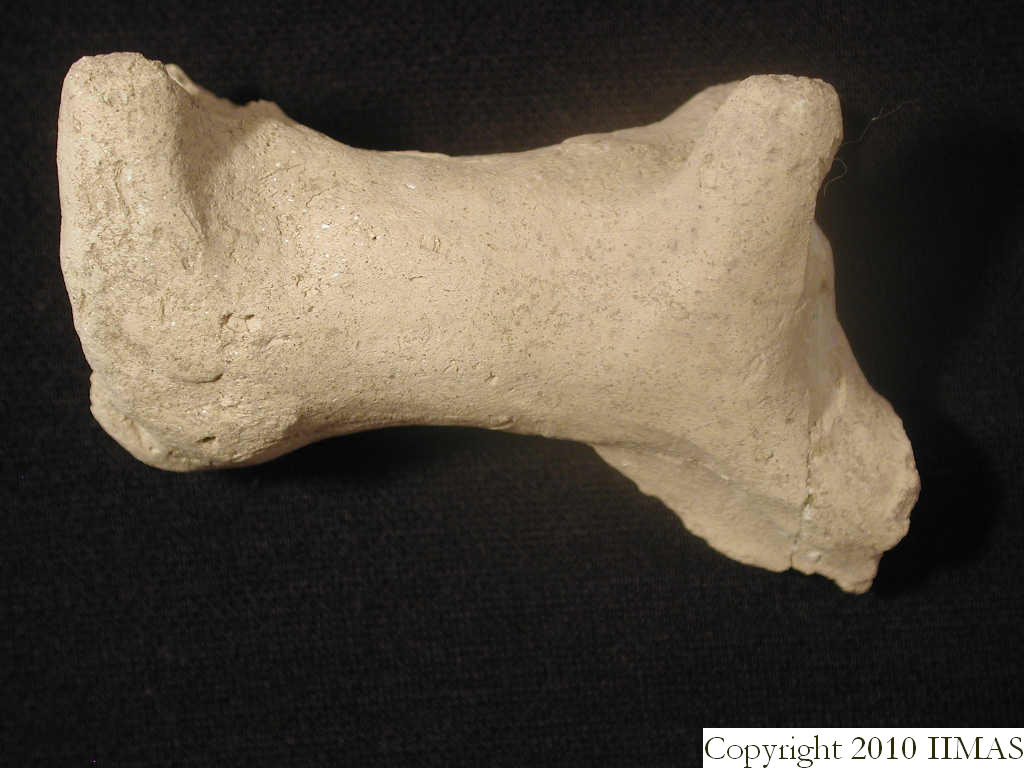 q691.4 |
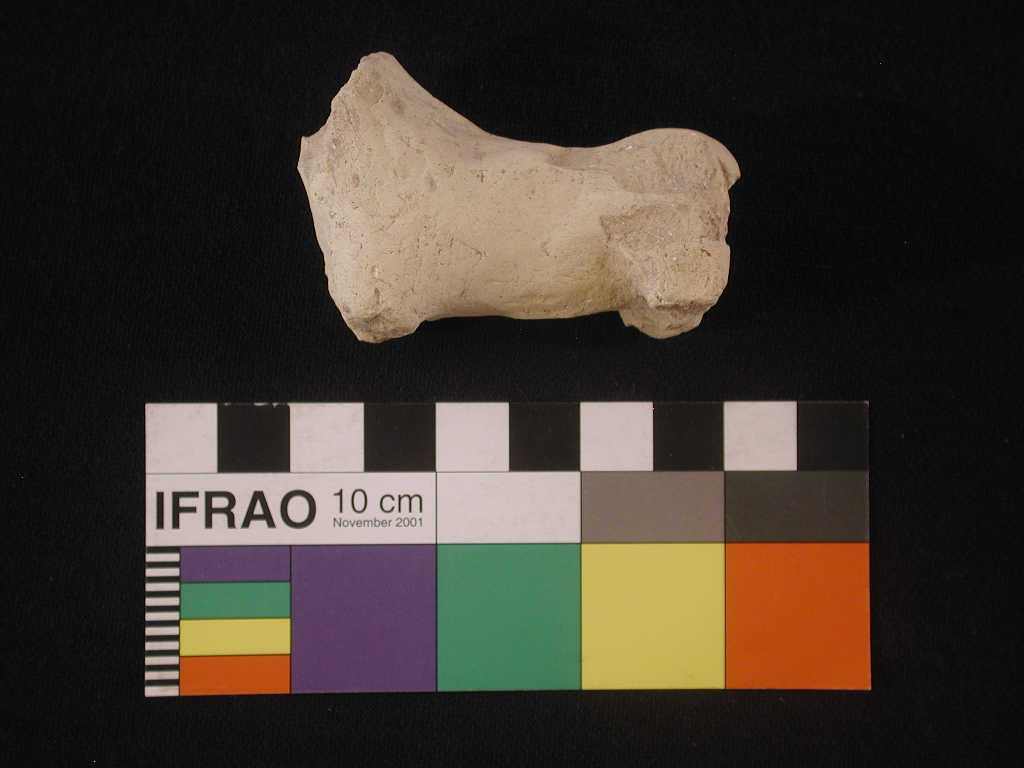 q741.1 |
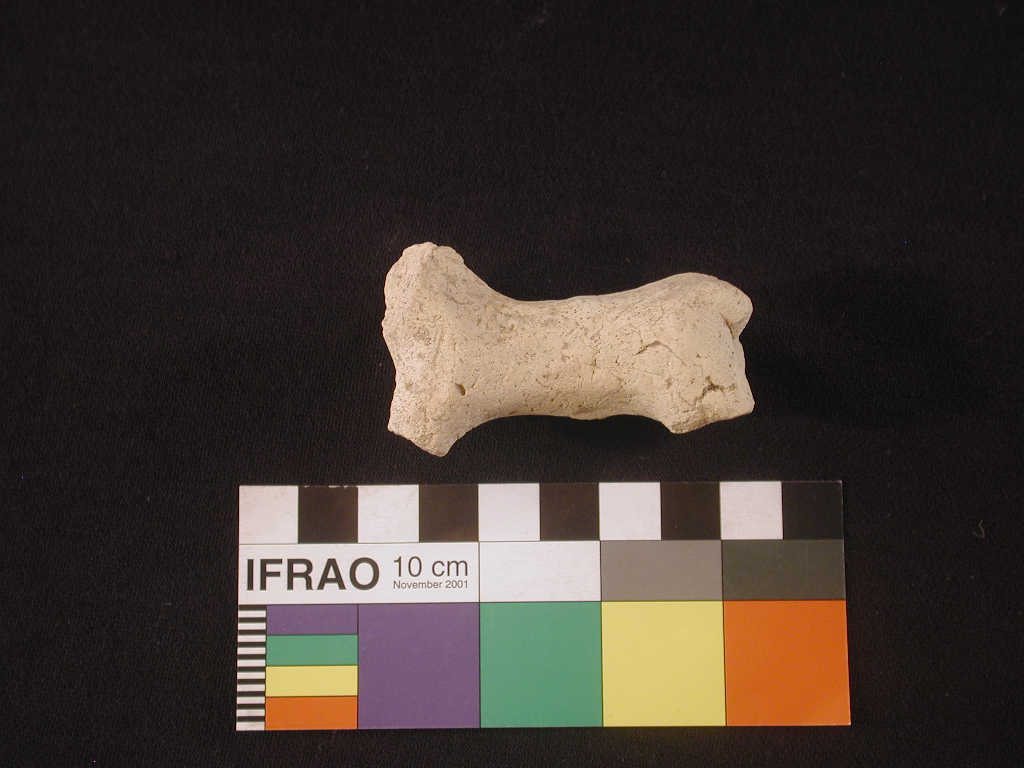 q767.1 |
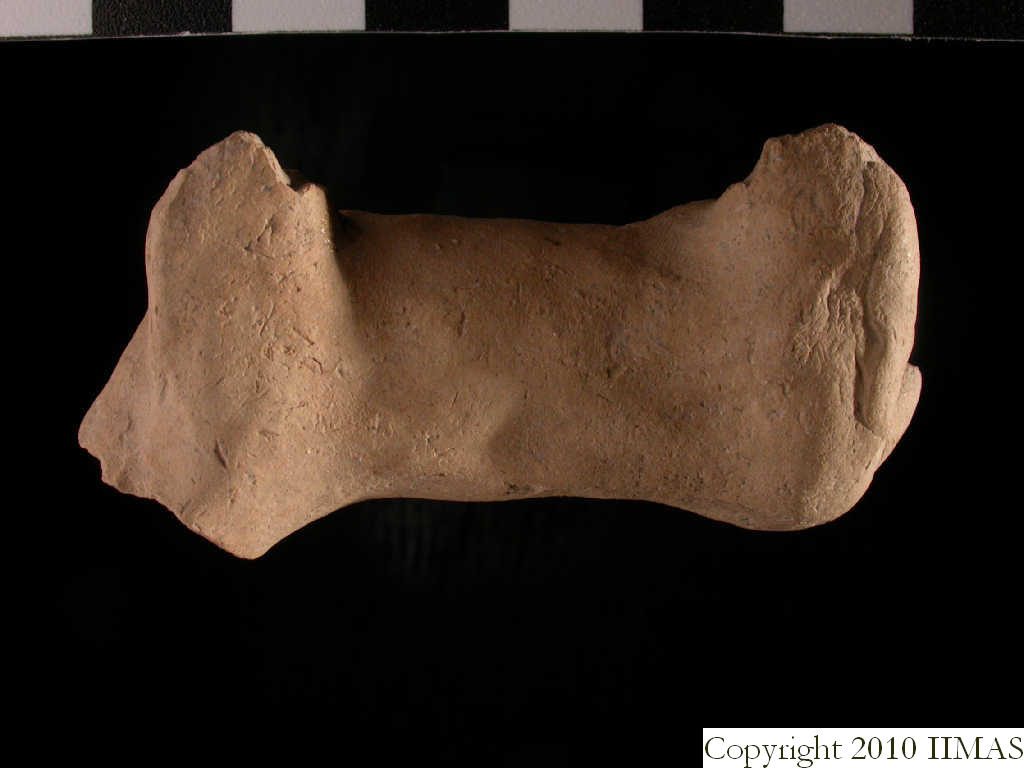 q886.2 |
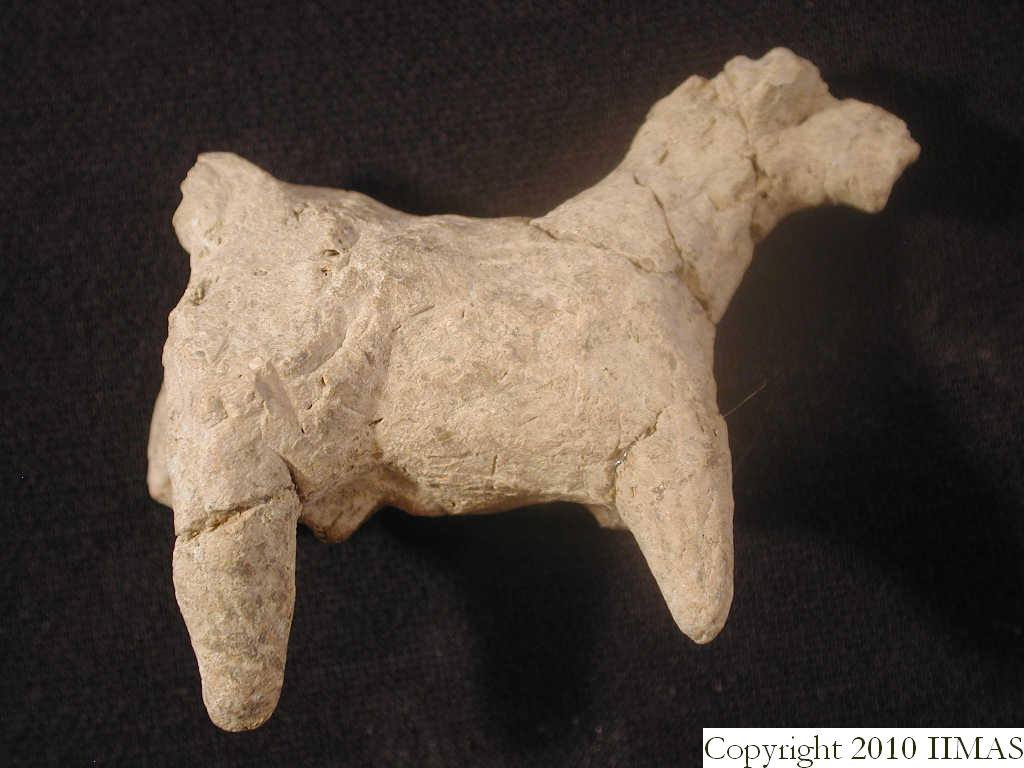 q900.1 |
Back to top: Figurines from Unit A16